Ingeniero Agrícola M. Sc., con amplia experiencia en la formulación y ejecución de proyectos agrícolas, y ciencia, tecnología e innovación, fundamentado en la gestión de propiedad intelectual. Desarrollo y seguimiento a procesos de transferencia de tecnología y generación de emprendimientos. Habilidades para desarrollar proyectos de investigación en Agricultura de Precisión, tal como análisis geoestadísticos, captura y procesamiento de imágenes (mosaicos) con drones, y desarrollo tecnológico. Experiencia en interventoría de obras para el diseño, construcción y adecuación de distritos y sistemas de riego y drenaje, administración de personal profesional, técnico y operativo, gestión de patentes y marcas comerciales, docencia universitaria e investigación científica.
Vinculado a la Universidad de Ciencias Aplicadas y Ambientales – U. D. C. A, Programa de Ingeniería Agronómica, desde agosto 01 de 2017. Coordinación del Semillero de Investigación Manejo de Recursos Hídricos en Ingeniería Agronómica – HIDROMAN – IA. Fecha desde: 06/09/2017 – actualmente. Líneas asociadas: Riego, drenaje, agroclimatología y cambio climático, maquinaria agrícola, agricultura de precisión, hidráulica.
Actualmente, Director del Programa de Ingeniería Agronómica y Coordinador de la Especialización en Manejo Sostenible de Suelos.

